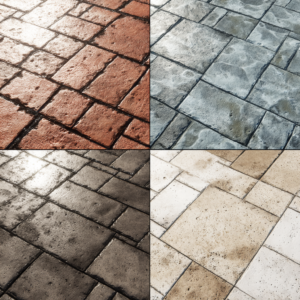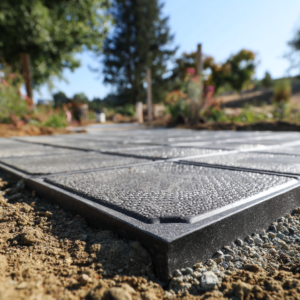Creating a patio that blends natural beauty with functionality is no small feat – but some materials lead the way more efficiently than others. Among the various paving options available, for example, flagstone stands out for its rustic elegance and durability, and it has been that way for decades. If you want to learn how to pave a patio with flagstone, this guide will offer a clear and comprehensive path from planning to completion.
Remember: understanding each step in detail is essential not only for aesthetic success but also for long-term satisfaction with the final result.
Don’t miss: Is paver edging necessary? Learn the definitive answer
Jump to:
What is flagstone, and why choose it for a patio?
Flagstone refers to a variety of sedimentary rocks that split into flat, thin layers. The most common types include sandstone, limestone, and slate. Each type offers different textures and colors, from earthy reds and browns to cool greys and blues.
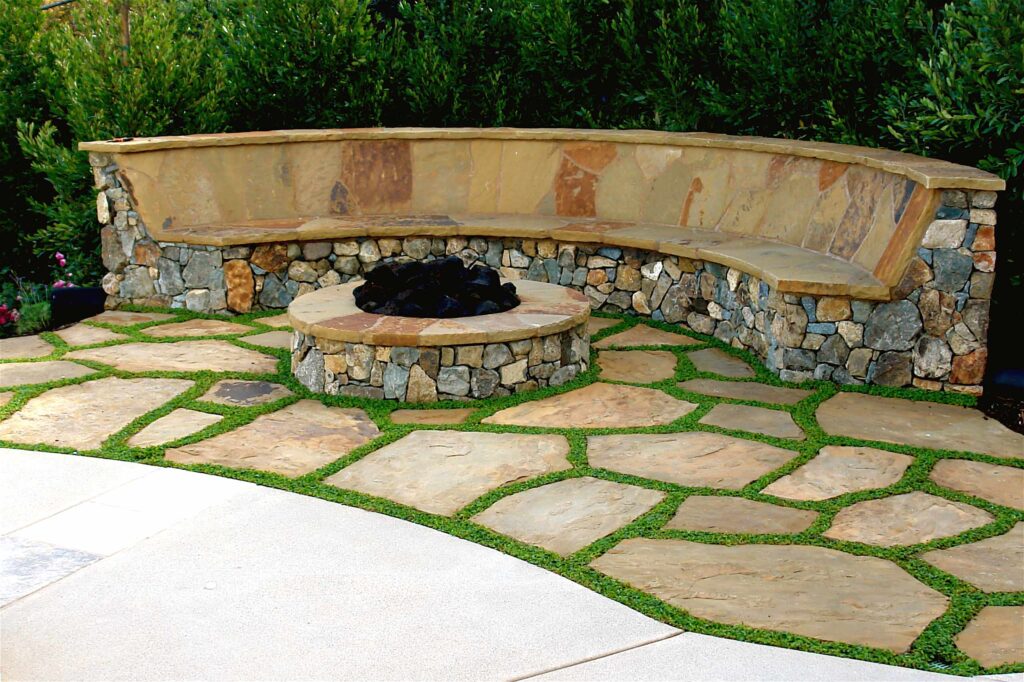
The appeal of flagstone lies in its natural appearance. No two pieces are exactly alike, allowing for creative and custom layouts that mimic organic patterns found in nature. Beyond looks, flagstone is also slip-resistant, highly durable, and relatively low-maintenance, which makes it a preferred choice for patios, walkways, and pool decks.
How to pave a patio with flagstone: planning the perfect layout
Paving a patio with flagstone starts with thoughtful planning. The first consideration is choosing the location; ideally, the patio should be built in a level area with good drainage to prevent water pooling.
Once the space is selected, sketching a layout is key. This can be done on paper or digitally, and should account for dimensions, curves, and access points. It’s also crucial to decide whether the flagstones will be laid in a formal pattern or a more natural, irregular one. Both have visual advantages, and the choice depends on the style of the surrounding landscape and home.
Preparing the foundation before installing flagstones
Understanding how to pave a patio with flagstone includes knowing the importance of a solid base. A proper foundation prevents movement and ensures longevity.
The area should be excavated to a depth of at least six inches, more if the soil is soft or sandy. A layer of compacted gravel, about four inches thick, forms the bottom layer. On top of this, a layer of sand or decomposed granite is added to provide a setting bed for the stones.
This preparation stage might seem labor-intensive, but it is absolutely critical. A poorly constructed base can lead to uneven stones, sinking, or cracking over time!
How to pave a patio with flagstone: laying the stones
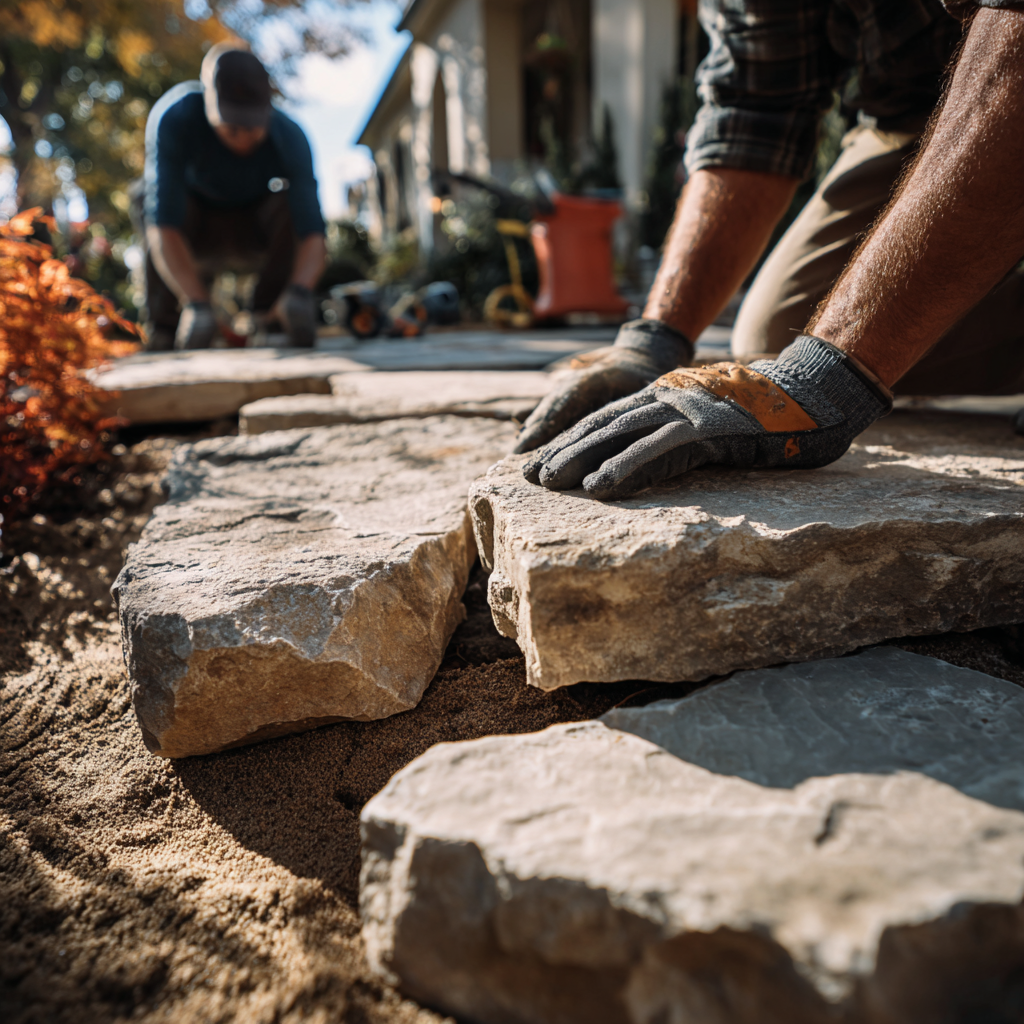
Once the foundation is set, it is time to start placing the flagstones.
- Begin at a corner or along an edge and work inward. Each stone should be placed carefully, and minor adjustments may be needed to fit them snugly.
- To achieve a stable and attractive layout, it is helpful to dry-fit the stones first, adjusting gaps and trimming edges as needed. A rubber mallet can be used to tap the stones into place. It’s important that each piece is level with its neighbors to avoid trip hazards.
- If the pattern is irregular, try to distribute different sizes and shapes evenly across the surface. If a formal pattern is chosen, consistency and symmetry should guide placement.
Filling the joints between flagstones
With the stones in place, the final step in how to pave a patio with flagstone is filling the joints. This not only secures the stones but also contributes to the overall appearance.
There are a few material options for filling joints. Sand is the most common, offering a natural look and allowing for drainage. Polymeric sand, which hardens when wet, provides more stability and weed prevention. Alternatively, gravel or even ground cover plants can be used for a more rustic aesthetic.
The filler should be swept into the joints, then compacted and watered gently to help it settle. This process may need to be repeated to fully fill the gaps.
Design ideas for flagstone patios
When planning how to pave a patio with flagstone, it’s helpful to explore various design ideas that can transform your outdoor space into a personal retreat. One timeless concept is the garden oasis look. Using irregular flagstone shapes and incorporating soft moss or ground cover between the stones creates a peaceful, organic atmosphere that blends seamlessly with nature.
For a more structured feel, a geometric layout using rectangular or square-cut flagstones offers clean lines and symmetry. This design pairs well with modern architecture and can be accented with sleek furniture and lighting.
Another creative option is to mix flagstone with other materials like brick or gravel. This hybrid approach adds contrast and texture while defining different zones, such as dining and lounging areas. Integrating features like a fire pit, water fountain, or built-in bench can enhance both form and function.
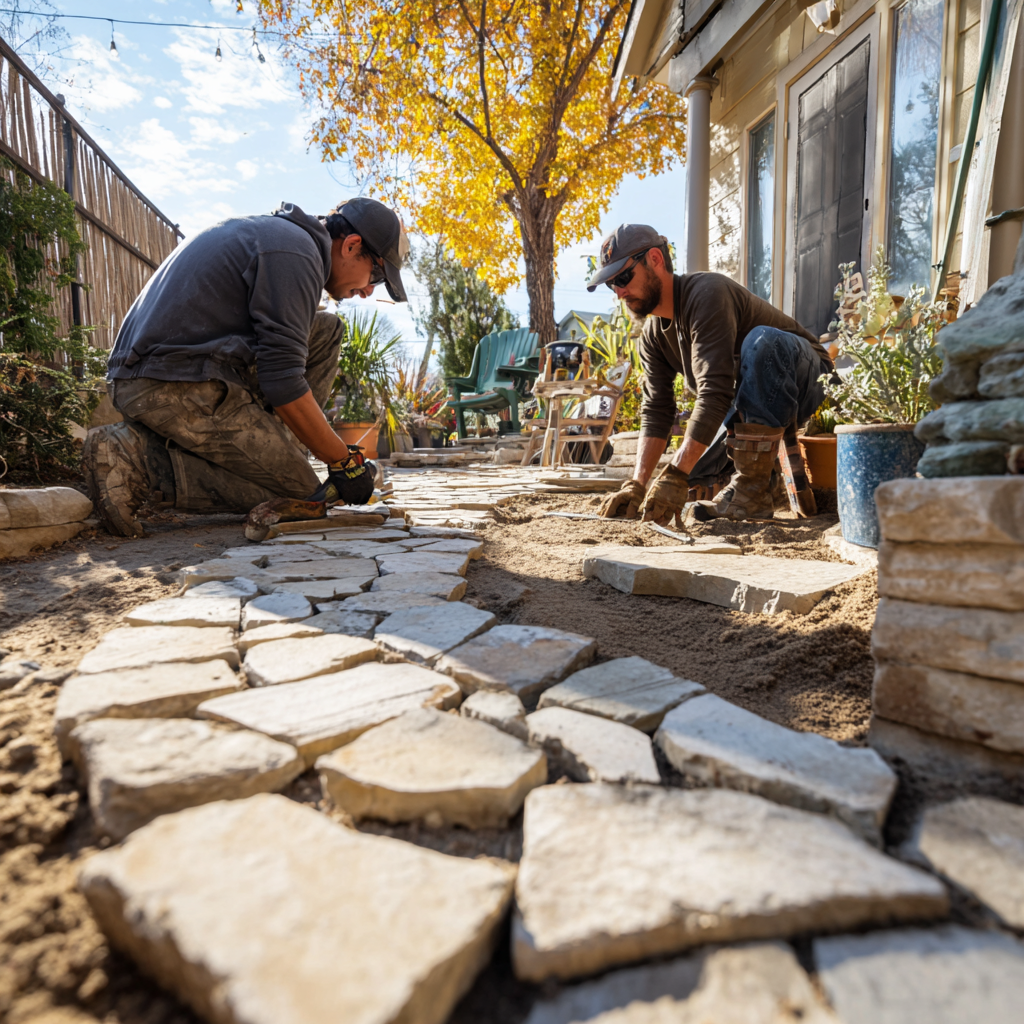
Color can also play a big role. Choosing stones with hues that complement your home’s exterior or the surrounding landscaping can tie everything together beautifully. Lighting is another powerful tool, helping to highlight textures and create ambiance during the evening.
Maintenance tips for a flagstone patio
Knowing how to pave a patio with flagstone is only part of the journey. Keeping it looking great for years requires proper maintenance.
Regular sweeping, for instance, helps prevent dirt buildup and weed growth. Avoid harsh chemicals when cleaning, too – as these can damage the stone.
In regions with freeze-thaw cycles, it’s wise to monitor for shifting stones or cracks, addressing these early to prevent bigger issues. Fortunately, thanks to the modular nature of flagstone, individual stones can be repositioned or replaced with relative ease.
Is DIY the right choice for you? We suggest hiring professional help always!
Look – we provided the general tutorial and overall scope of what to expect when paving a patio with flagstone. However, it’s not unusual for things to go south when there’s no expertise involved.
You see, while it is possible for experienced DIYers, the process is physically demanding and time-intensive. The margin for error is slim – especially in foundation work. A small miscalculation in drainage or leveling can lead to costly repairs down the line. Working with flagstone also requires specific tools and the ability to maneuver heavy materials with precision.
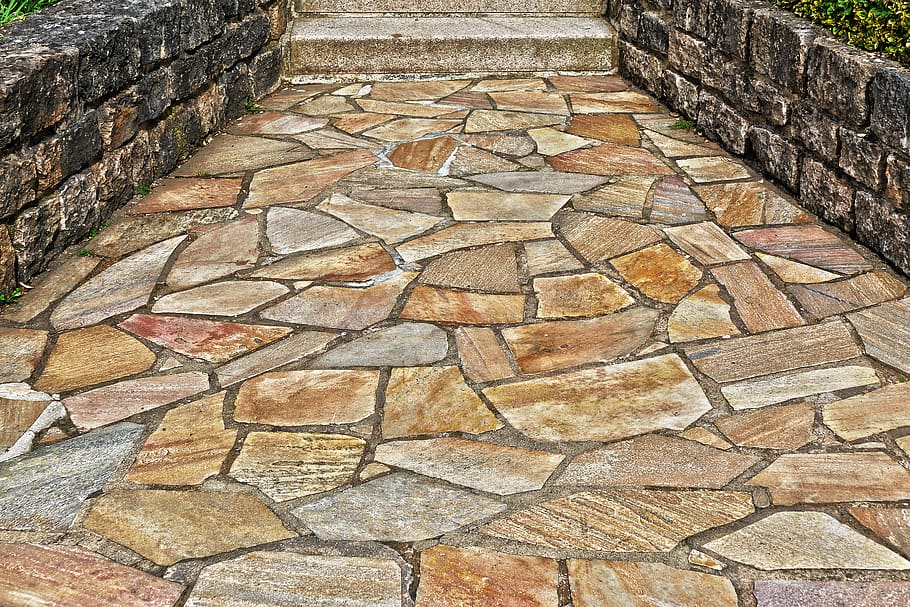
Therefore, don’t hesitate. If you live in or around Sarasota, Florida, and want a guaranteed professional finish without the stress and potential setbacks, hiring experts like us at JS Brick is the best route. Choosing JS Brick means opting for peace of mind, knowing the job will be done right the first time. Our team brings years of experience in flagstone patio installation, ensuring every detail, from base preparation to the final placement, is executed to perfection with care and craftsmanship!
Our clients also appreciate the convenience of having a dedicated team handle permits, sourcing materials, and navigating Florida’s climate challenges. We aim to make the process as smooth and comfortable as possible for you, so you can enjoy your outdoor spaces without worry.

